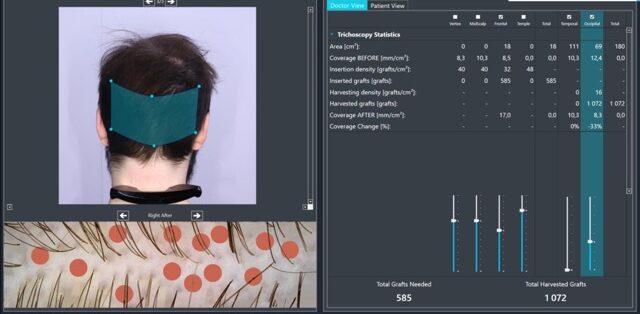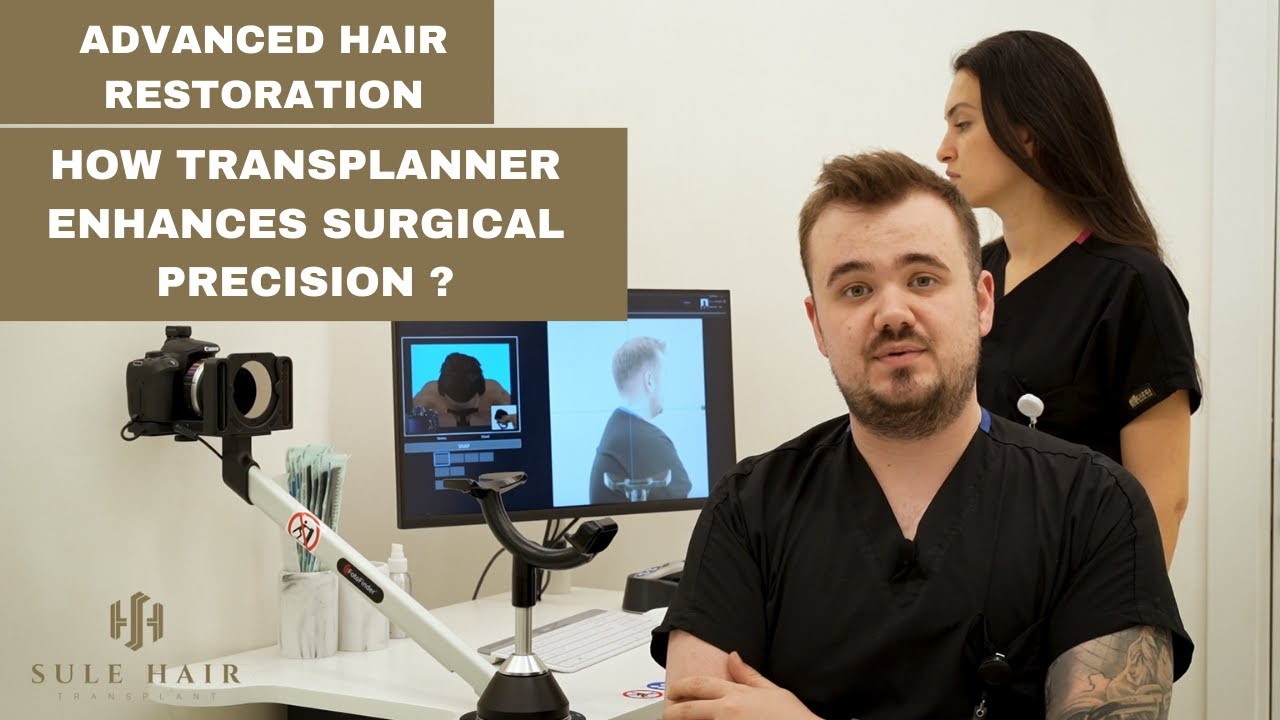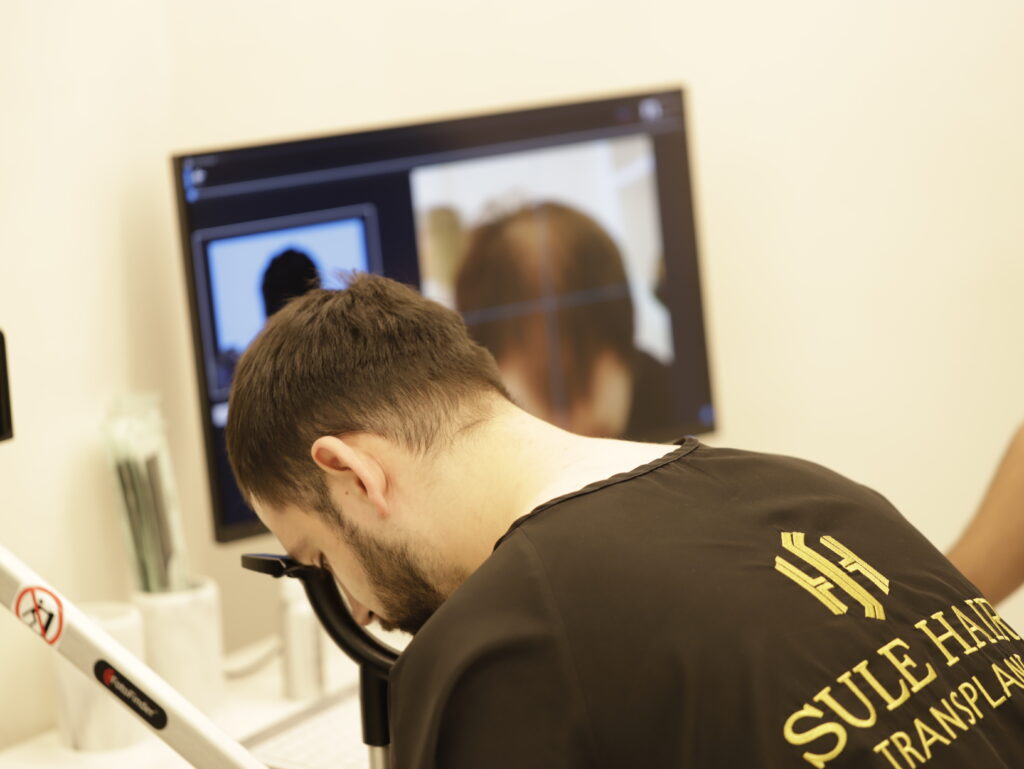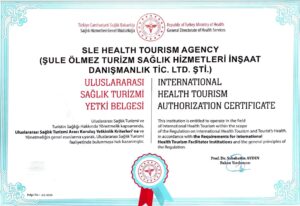
Hair transplant planning & documentation
You can design hair transplants fast and precisely. Based on trichoscopy examination and standardized clinical images, it objectively calculates the available grafts in the donor area as well as the needed ones in the recipient area for an optimal result. The technology saves you and your patient time and quickly quantifies whether a surgery will be successful. All that at the very initial visit, without shaving the patient!
What is Trichoscopy?

Trichoscopy is a non-invasive diagnostic technique used to examine the hair and scalp using a dermatoscope, which is a specialized handheld microscope with a polarized light source. This technique allows dermatologists to examine hair shafts, follicular openings, and the scalp in detail, providing a more accurate diagnosis of hair and scalp conditions.
Trichoscopy can be used to diagnose various hair and scalp disorders, such as androgenetic alopecia, alopecia areata, telogen effluvium, and scalp psoriasis. It can also be used to assess the progress of hair regrowth after treatment.
During a trichoscopy exam, the dermatologist will apply a gel or oil to the scalp to improve the visibility of the hair and scalp structures. The dermatoscope is then placed on the scalp, and the images are examined on a computer monitor. The dermatologist may also take photographs for documentation and to monitor progress.
Overall, trichoscopy is a valuable tool for dermatologists to diagnose and monitor hair and scalp conditions, and it can provide more accurate and detailed information than traditional methods of examination.

Advantages of Trichoscopy
Trichoscopy has several advantages over other diagnostic methods for hair and scalp conditions:
Non-invasive: Trichoscopy is a non-invasive technique, which means it does not require any incisions or punctures of the skin. This makes it a safer and less painful option for patients.
Accurate diagnosis: Trichoscopy allows for detailed visualization of the hair shaft, hair follicles, and scalp skin, which can aid in the accurate diagnosis of hair and scalp conditions. It also helps in identifying early signs of hair loss, which can lead to earlier intervention and better treatment outcomes.
Objective assessment: Trichoscopy provides an objective assessment of the hair and scalp, which means that it eliminates subjectivity in the diagnosis and monitoring of hair conditions. It also helps to track treatment progress over time.
Cost-effective: Trichoscopy is a cost-effective diagnostic tool, especially when compared to more invasive procedures such as scalp biopsies.
Patient-friendly: Trichoscopy is a quick and painless procedure that can be performed in a clinic or doctor’s office. It also does not require any special preparation or recovery time, making it convenient for patients.
Overall, trichoscopy is a valuable tool in the diagnosis and management of hair and scalp conditions, providing accurate and objective information to healthcare providers while being a safe and patient-friendly option.
Trichoscopy Procedure
Trichoscopy has several advantages over other diagnostic methods for hair and scalp conditions:
Non-invasive: Trichoscopy is a non-invasive technique, which means it does not require any incisions or punctures of the skin. This makes it a safer and less painful option for patients.
Accurate diagnosis: Trichoscopy allows for detailed visualization of the hair shaft, hair follicles, and scalp skin, which can aid in the accurate diagnosis of hair and scalp conditions. It also helps in identifying early signs of hair loss, which can lead to earlier intervention and better treatment outcomes.
Objective assessment: Trichoscopy provides an objective assessment of the hair and scalp, which means that it eliminates subjectivity in the diagnosis and monitoring of hair conditions. It also helps to track treatment progress over time.
Cost-effective: Trichoscopy is a cost-effective diagnostic tool, especially when compared to more invasive procedures such as scalp biopsies.
Patient-friendly: Trichoscopy is a quick and painless procedure that can be performed in a clinic or doctor’s office. It also does not require any special preparation or recovery time, making it convenient for patients.
Overall, trichoscopy is a valuable tool in the diagnosis and management of hair and scalp conditions, providing accurate and objective information to healthcare providers while being a safe and patient-friendly option.


